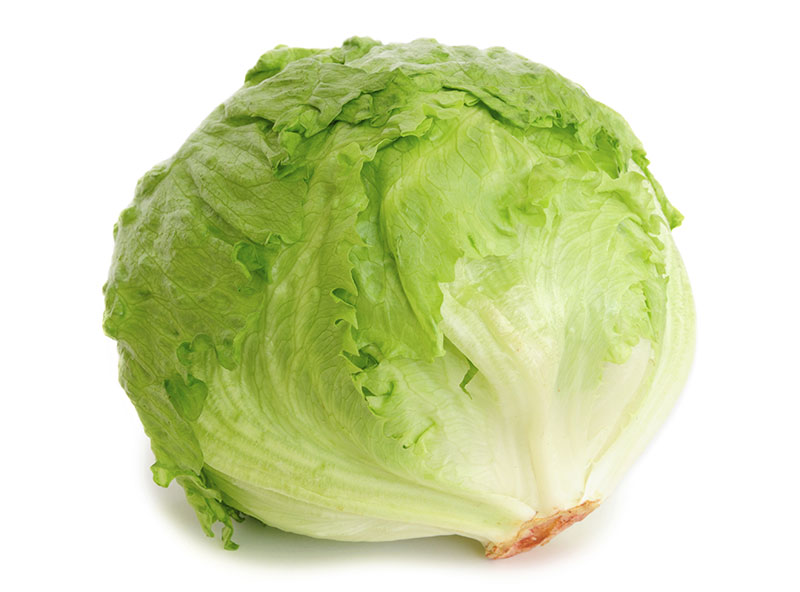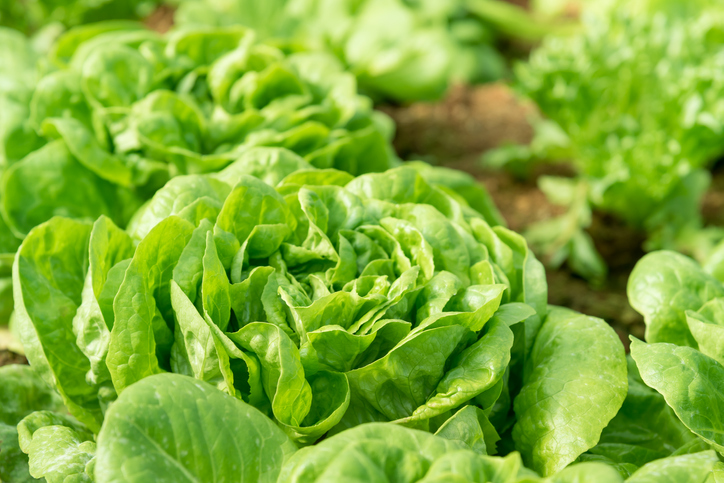Lettuces, Iceberg

Availability:
Year-round
Availability:
| J | F | M | A | M | J | J | A | S | O | N | D |
Notice:
on demand
Receiving/Storage:
Receiving Information: Good quality of leaf lettuce should be fresh, crisp, in a tightly sealed bag. Avoid lettuce that appears wilted or shows signs of spotting or decay. Avoid leaf lettuce with yellow leaves or with leaves showing cracked ribs. Storage/Handling: Follow good rotation practices; first shipments received should be used first. Leaf lettuce may exhibit russet (brown) spotting if exposed to ethylene. To prevent russet spotting, keep lettuce away from ethylene producing fruits and ripening rooms. Storing leaf lettuce at high temperatures may promote rapid deterioration. Rough handling may also promote deterioration of bruised leaves. Storing leaf lettuce in an area with low humidity may promote wilting. Dried translucent leaves is an indication of freeze damage. Temperature/humidity recommendation for short-term storage of 7 days or less: 32„36 degrees F / 0„2 degrees C. Humidity 90_ 98%.
Description:
The leaves of this lettuce are crisp & green on the outside, while inner leaves, which are not exposed to light, are rather yellowish or whitish. Common cultivated types of lettuce are derived from the species Lactuca sativa, originally from Eurasia & a member of the daisy family, Compositae. There are 4 general classes, based on growth habits & shape, which include crisp-head, butter head, leaf, & cos or romaine. Crisphead is often erroneously called ñicebergî, actually a named variety within this class of lettuce. 1994 marked the 100th birthday of iceberg lettuce, and it was quite by accident that it was discovered. On their Fordhook Farm in Doylestown, PA, the Burpee people had grown Batavia, or ñcabbage-headî lettuce with possible ancient Celtic roots. Someone noticed a rather different-looking head that was well-blanched at the center and large. When tasted, it was unusually crisp and considered ñsweetî, due to its much milder taste from the rest. Liking what they saw and tasted, they joined other American growers and improved it. There are many varieties of iceberg as a result today.


